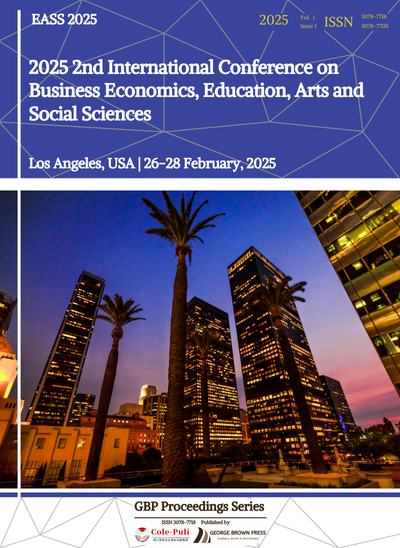The Contribution of Non-Profit Organizations in Creating a Unified Society
DOI:
https://doi.org/10.71222/m07zcz52Keywords:
social security, non-profit organizations, harmonious society, construction method, public servicesAbstract
Non-profit organizations play a crucial role in the social security system. Their flexibility, resource integration capabilities, and public welfare focus make them an essential complement to government and market functions. This paper begins with a theoretical foundation to analyze the alignment between non-profit organizations and social security, exploring their specific roles in service provision, policy advocacy, and the establishment of collaborative networks. Through case analysis, the paper summarizes the practical experiences of non-profits, further examining the advantages and challenges they face in participating in social security. Finally, it proposes strategies to enhance non-profit involvement in social security, including institutional support, capacity building, multi-party cooperation, and raising public awareness. The paper offers both theoretical and practical recommendations for non-profits to better contribute to the social security system. Its aim is to provide valuable insights into the role of non-profit organizations in social security and support the development of a diversified and sustainable social security system.
References
1. I. V. Gubarenko, A. A. Shabelnikov, and S. V. Sokolov, "Methods of social interaction learning for students of non-profit or-ganizations," Int. J. Criminol. Sociol., vol. 9, pp. 1898-1905, 2020, doi: 10.6000/1929-4409.2020.09.220.
2. A. Y. Telitsyna, "Some measures of state and non-state support for families with children: The role of non-profit sector organ-izations," Soc. Sci. Childhood, vol. 4, no. 2, pp. 23-38, 2023, doi: 10.17759/ssc.2023040202.
3. M. Oliveira, J. Oliveira, A. P. Borges, et al., "Social networks in the non-profit sector: Social support practices," Int. Rev. Public Nonprofit Mark., vol. 18, pp. 523–552, 2021, doi: 10.1007/s12208-021-00283-6.
4. S. Nwauche, "An evaluation of the effectiveness of government–non-profit organizations partnership in the delivery of social services," Dev. Pract., vol. 32, no. 5, pp. 660-670, 2022, doi: 10.1080/09614524.2021.2010659.
5. O. Kononenko, "Non-governmental organizations as a subject to provide social assistance to the population," Pol. Sci. Sec. Stud. J., vol. 1, no. 1, pp. 83-88, 2020, doi: 10.5281/zenodo.4539885.
6. L. Zhou, B. Guo, and J. Huang, "Financial well-being of the non-profit social service workforce in China," Br. J. Soc. Work, vol. 51, no. 8, pp. 3035-3054, 2021, doi: 10.1093/bjsw/bcaa176.
7. N. Gestel, S. B. Waldorff, and J.-L. Denis, "(Mis) taking social responsibility? Implementing welfare state reform by private and non-profit organizations," Public Manag. Rev., vol. 22, no. 12, pp. 1739-1759, 2020, doi: 10.1080/14719037.2019.1648696.
8. M. R. Clausen, "How funding of non-profit social organizations affects the number of volunteers," VOLUNTAS: Int. J. Volunt. Nonprofit Organ., 2021, pp. 1-12, doi: 10.1007/s11266-021-00321-1.
9. M. Oliveira, J. Oliveira, A. P. Borges, et al., "Social networks in the non-profit sector: Social support practices," Int. Rev. Public Nonprofit Mark., vol. 18, pp. 523–552, 2021, doi: 10.1007/s12208-021-00283-6.










